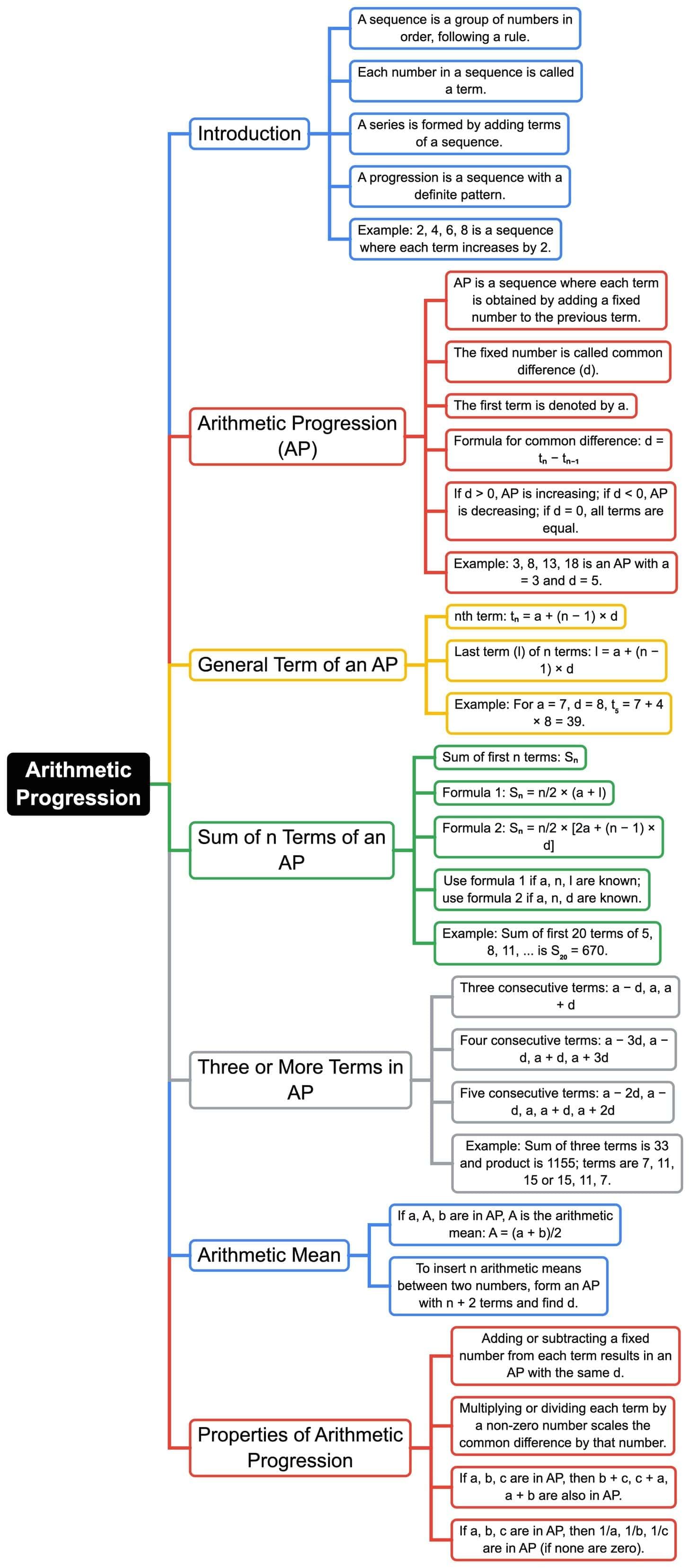Class 10 Exam > Class 10 Notes > Mathematics (Maths) Class 10 > Mind Map: Arithmetic Progressions
Mind Map: Arithmetic Progressions | Mathematics (Maths) Class 10 PDF Download

The document Mind Map: Arithmetic Progressions | Mathematics (Maths) Class 10 is a part of the Class 10 Course Mathematics (Maths) Class 10.
All you need of Class 10 at this link: Class 10
|
127 videos|584 docs|79 tests
|
FAQs on Mind Map: Arithmetic Progressions - Mathematics (Maths) Class 10
| 1. What is an arithmetic progression (AP)? |  |
Ans.An arithmetic progression (AP) is a sequence of numbers in which the difference between any two consecutive terms is constant. This difference is called the "common difference." For example, in the sequence 2, 5, 8, 11, the common difference is 3.
| 2. How do you find the nth term of an arithmetic progression? |  |
Ans.To find the nth term of an arithmetic progression, you can use the formula: \( a_n = a + (n-1)d \), where \( a \) is the first term, \( d \) is the common difference, and \( n \) is the term number. For example, if the first term is 2 and the common difference is 3, the 5th term would be \( 2 + (5-1) \times 3 = 14 \).
| 3. What is the formula for the sum of the first n terms of an arithmetic progression? |  |
Ans.The formula for the sum \( S_n \) of the first n terms of an arithmetic progression is given by: \( S_n = \frac{n}{2} [2a + (n-1)d] \) where \( a \) is the first term, \( n \) is the number of terms, and \( d \) is the common difference. Alternatively, it can also be expressed as \( S_n = \frac{n}{2} (a + l) \), where \( l \) is the last term.
| 4. Can you provide an example of an arithmetic progression? |  |
Ans.An example of an arithmetic progression is the sequence 7, 10, 13, 16, 19. In this sequence, the first term \( a = 7 \) and the common difference \( d = 3 \). Each term increases by 3 from the previous term.
| 5. How do you determine if a sequence is an arithmetic progression? |  |
Ans.To determine if a sequence is an arithmetic progression, check if the difference between consecutive terms is constant. For example, in the sequence 4, 8, 12, 16, the differences are 4, 4, and 4, which are the same, confirming that it is an arithmetic progression.
Related Searches
















